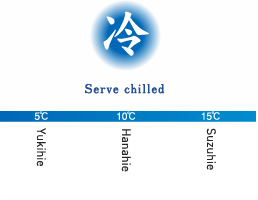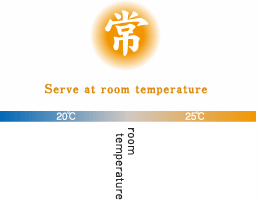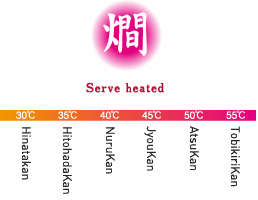
Sake has over 1,000 years of history, and it is produced by the unique process passed down from early times. The following three aspects are the characteristics of sake brewing.
| Rice Koj | Since Asia has a monsoonal climate with high-temperatures and humidity, koji is used for saccharification, unlike the western culture which uses malt. Koji is a mold grown in grain. In Japan, granular koji, which is purely grown in rice, is uniquely used. |
|---|---|
| Fermentation process | Fermented alcoholic beverages made from grain have two processes. One of them is saccharification in which starch in the grain is converted to sugar, and the other is fermentation in which sugar is converted to alcohol. In sake brewing, because the saccharification and fermentation processes occur in parallel in the same container at the same time, the process is called “multiple parallel fermentation.” |
| Three steps of addition | Rice koji and steamed rice are added to the main fermentation mash in three steps, because saccharification and fermentation gradually progress in open systems to prevent the entry of unwanted bacteria. The unique three steps of addition allow sake to have an original aroma and create an unusually high alcohol content of over 20%, compared to other fermented beverages of the world. |
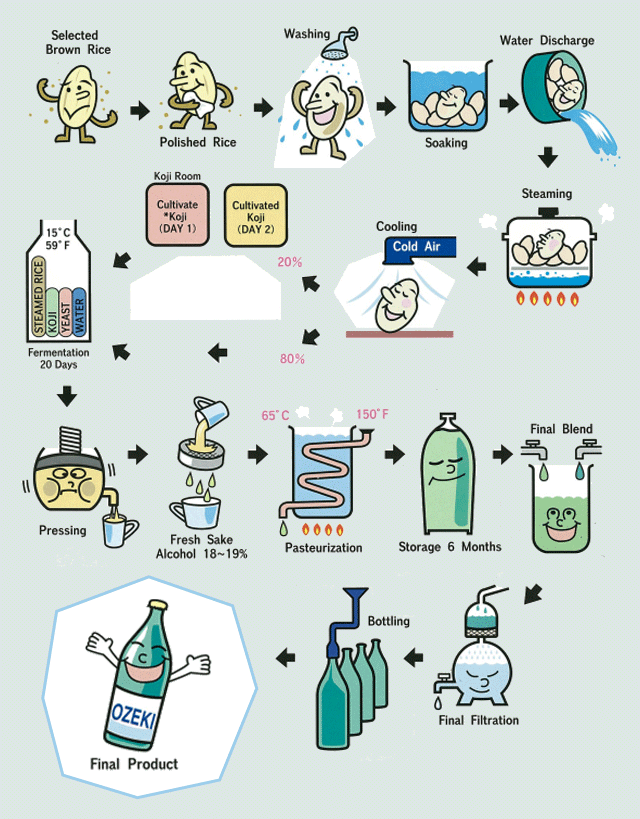

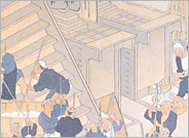 “The song for sake brewing” has been passed down and sung by Toji, the master brewers. Many of the steps in brewing took place at odd hours of the day and night. The sake brewers continuously sung in unison to endure the hard work and to concentrate on producing steps correctly. “Sake is alive and does not wait for us.” “The song for sake brewing” expresses the good old tradition that the people struggle with nature. A lesson that people at present day tend to forget.
“The song for sake brewing” has been passed down and sung by Toji, the master brewers. Many of the steps in brewing took place at odd hours of the day and night. The sake brewers continuously sung in unison to endure the hard work and to concentrate on producing steps correctly. “Sake is alive and does not wait for us.” “The song for sake brewing” expresses the good old tradition that the people struggle with nature. A lesson that people at present day tend to forget.

The set temperatures that are suitable for drinking sake have unique expressions in the Japanese language. All of them are expressions of delicate care by Japanese people. Sake can be enjoyed at any preferred temperature.
